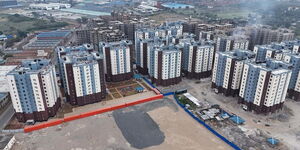Kenya witnessed a 65.74 percent surge in electricity imports, according to the latest Energy and Petroleum Statistics Report by the Energy and Petroleum Regulatory Authority (EPRA) for the 2023–2024 financial year.
The report, released recently, revealed that Kenya's electricity imports surged from 143.40 gigawatts (GWh) per hour in the second half of 2022 to an impressive 419.13 gigawatt-hours (GWh) during a similar period last year.
This surge in imports, accounting for 6.16% of the nation's energy mix, has been attributed to the full commercial operations of the power purchase agreement between Kenya Power and Ethiopian Electric Power (EEP).
"In the period under review, Kenya imported 419.131 GWh of electricity, marking a significant increase. The spike in December 2023 can be directly linked to the successful commercial operation of the power purchase agreement between Kenya Power and EEP," the EPRA report noted.
This increase in imports comes in the wake of heightened demand for electricity in Kenya, as indicated by data from the Kenya National Bureau of Statistics (KNBS).
The KNBS reported that Kenya more than doubled its power imports from neighbouring countries in the first 11 months of 2023, importing 706.9 million kWh of electricity from Ethiopia and Uganda, compared to 288.27 million kWh in the same period in 2022.
Ethiopia emerged as Kenya's largest supplier of electricity in the region, providing 546.5 million kWh during the period, according to KNBS data. EPRA predicts that power imports from Ethiopia will continue to rise, with an expected increase in import capacity by 200 MW over the next three years, reaching 400 MW.
Kenya's installed power generation currently stands at approximately 3,078 MW, with a total effective interconnected capacity of about 2,925 MW.
However, the system's peak demand averages 2,057 MW, leaving a narrow margin for available capacity, thus necessitating imports, EPRA highlighted.
The industrial sector leads in electricity consumption, accounting for 51.99% of total consumption. This surge in industrial consumption is attributed to the ongoing recovery of the supply chain within Kenya's economy.
"The industrial sector has shown a remarkable recovery, consuming 2,706.62 gigawatt hours (GWh) of electricity, which represents over half of the total consumption," stated the EPRA report.
Following closely behind is the domestic sector, which consumed 1,593.33 GWh (30.72%), and the commercial sector (SMEs) at 943.04 GWh (18.08%).
Street lighting and electric mobility recorded the lowest electricity consumption figures, at 56.48 GWh (1.09%) and 0.32 GWh (0.01%), respectively.
The report also shed light on regional disparities in energy consumption, with Nairobi emerging as the highest consumer of electrical energy, accounting for 44.07% of the country's total energy consumption.
The Coast region ranked second, utilising 17.87% of the nation's energy, followed by the Rift Valley region at 13.55%.
While North-Eastern and Mt. Kenya regions contributed 10.78% and 6.47% to the overall consumption, respectively, West Kenya and South Nyanza regions reported the lowest consumption percentages, representing 5.35% and 1.92% of the total consumption, respectively.












